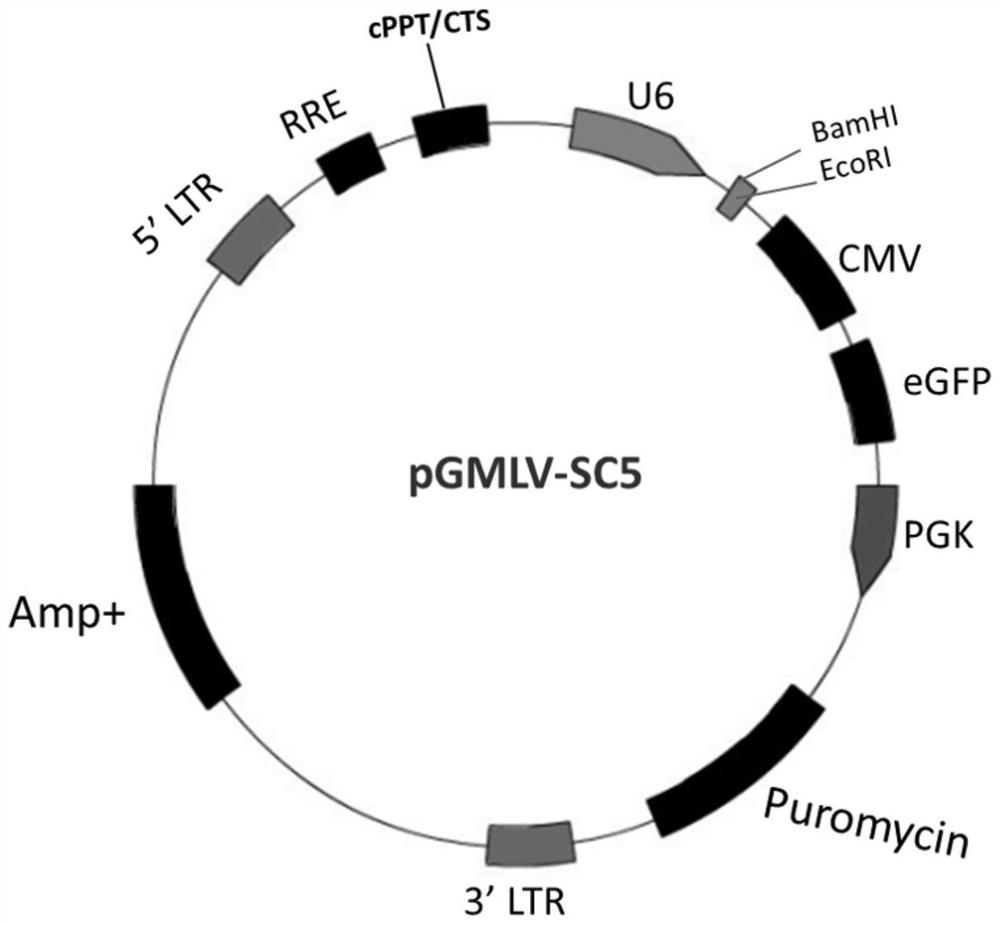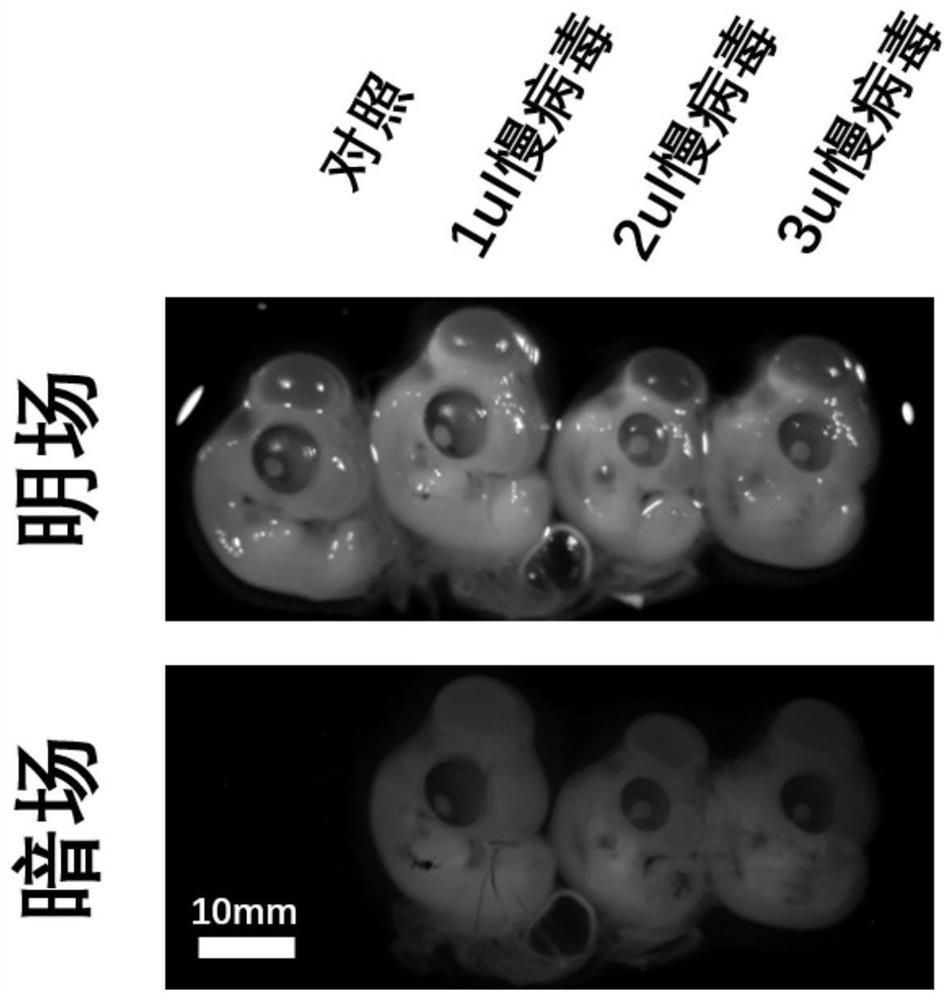Novel method for introducing slow virus vector into chick embryo
A lentiviral vector, chicken embryo technology, applied in the direction of virus/phage, vector, virus, etc., can solve the problems of limiting the application of lentiviral vector, the method of introducing lentiviral vector into chicken embryo without systematic optimization, etc., to achieve simple and fast operation. , Simple operation, high import efficiency
- Summary
- Abstract
- Description
- Claims
- Application Information
AI Technical Summary
Problems solved by technology
Method used
Image
Examples
Embodiment Construction
[0020] (1) Package the lentiviral vector to be introduced, co-transfect the lentiviral expression vector and the packaging plasmid into 293T cells, package the virus, collect the virus stock solution, concentrate it by ultrafiltration, and measure the titer. In this example, the lentiviral vector is pGMLV-SC5 (for the vector structure, see figure 1 ), the packing titer is 5*10 8 TU / ml.
[0021] (2) For the early embryonic eggs (13-17HH) incubated for 48-58 hours, use tweezers to open the blunt end under sterile conditions. The opening size is a round hole with a diameter of 1-1.5 cm. The forceps gently lift apart the shell membrane, exposing the embryo.
[0022] (3) Use a micropipette to draw the virus stock solution (0-5ul virus stock solution can be drawn) for the lentiviral vector to be introduced, mix it with DMEM or PBS, and gently drop it on the surface of the embryo after mixing. as the picture shows( figure 2 ).
[0023] (4) Add 200 ul of penicillin and streptomy...
PUM
 Login to View More
Login to View More Abstract
Description
Claims
Application Information
 Login to View More
Login to View More - R&D Engineer
- R&D Manager
- IP Professional
- Industry Leading Data Capabilities
- Powerful AI technology
- Patent DNA Extraction
Browse by: Latest US Patents, China's latest patents, Technical Efficacy Thesaurus, Application Domain, Technology Topic, Popular Technical Reports.
© 2024 PatSnap. All rights reserved.Legal|Privacy policy|Modern Slavery Act Transparency Statement|Sitemap|About US| Contact US: help@patsnap.com










